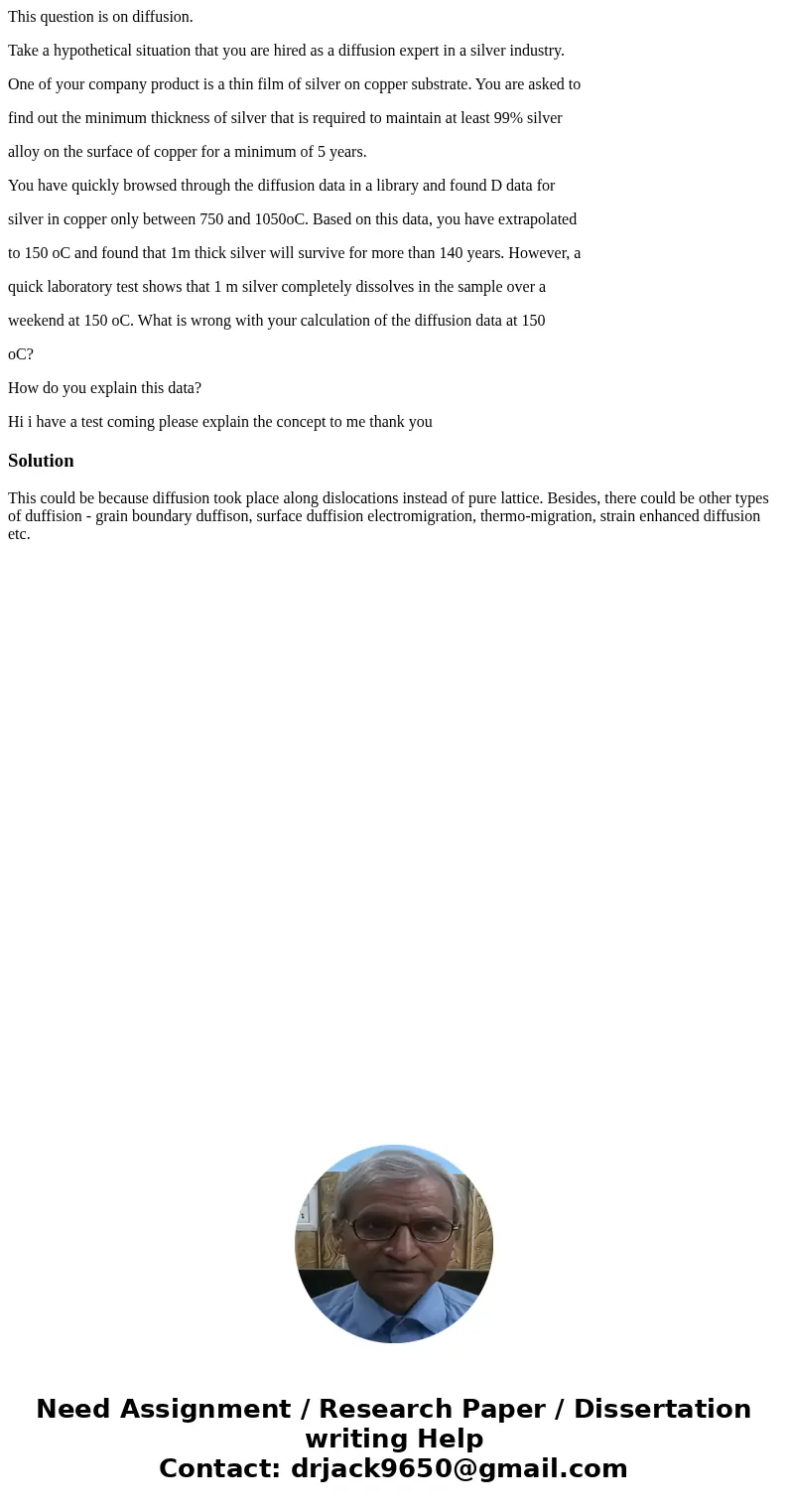This question is on diffusion Take a hypothetical situation
This question is on diffusion.
Take a hypothetical situation that you are hired as a diffusion expert in a silver industry.
One of your company product is a thin film of silver on copper substrate. You are asked to
find out the minimum thickness of silver that is required to maintain at least 99% silver
alloy on the surface of copper for a minimum of 5 years.
You have quickly browsed through the diffusion data in a library and found D data for
silver in copper only between 750 and 1050oC. Based on this data, you have extrapolated
to 150 oC and found that 1m thick silver will survive for more than 140 years. However, a
quick laboratory test shows that 1 m silver completely dissolves in the sample over a
weekend at 150 oC. What is wrong with your calculation of the diffusion data at 150
oC?
How do you explain this data?
Hi i have a test coming please explain the concept to me thank you
Solution
This could be because diffusion took place along dislocations instead of pure lattice. Besides, there could be other types of duffision - grain boundary duffison, surface duffision electromigration, thermo-migration, strain enhanced diffusion etc.

 Homework Sourse
Homework Sourse